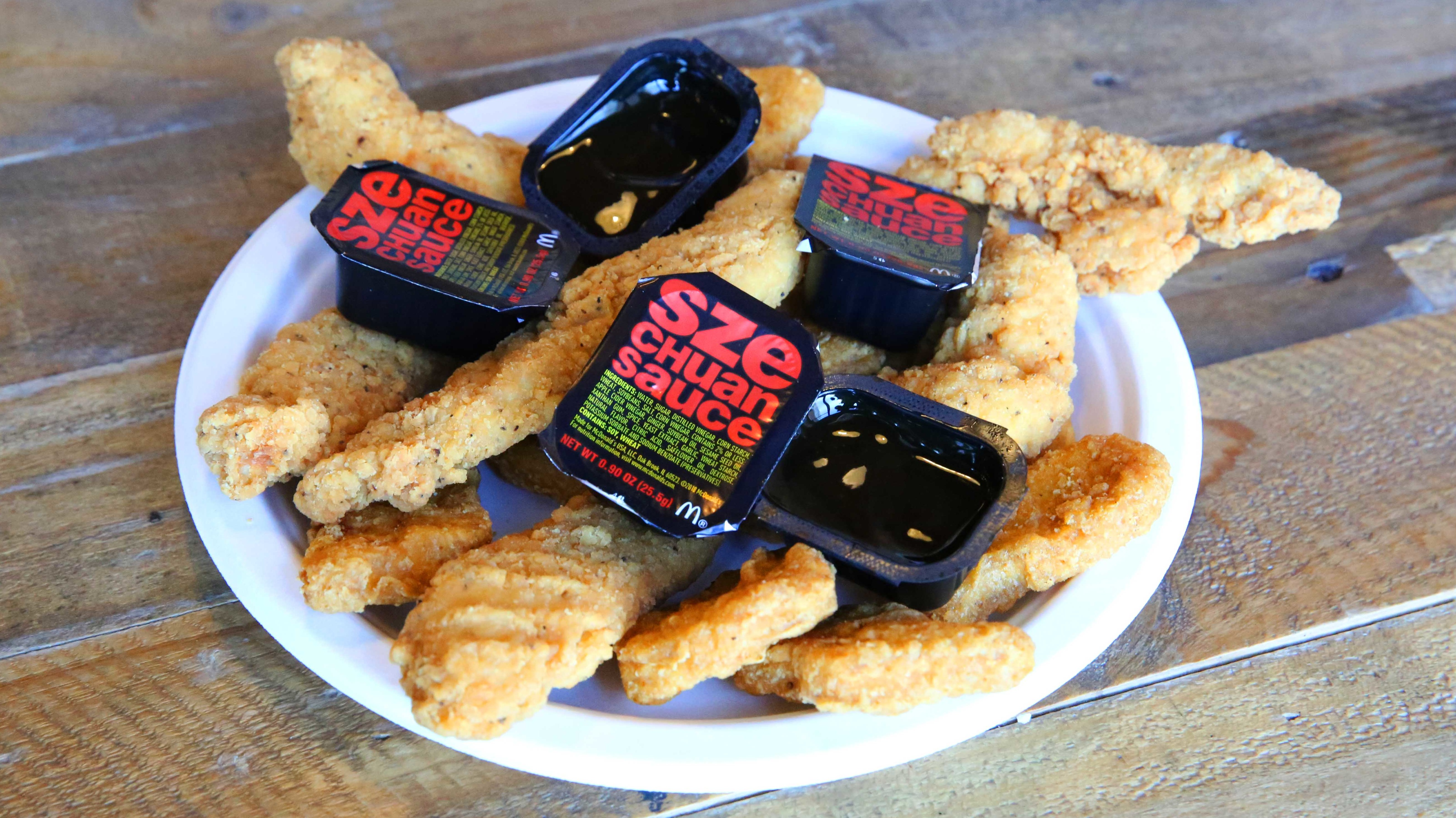McDonald's Szechuan Sauce Is America Encapsulated In Nugget-Dipping Form
Martin Yan. Cecilia Chang. The fortune cookie. Panda Express' Orange Chicken. All incontrovertibly shaped America's perception of Chinese food. Add to that list McDonald's Szechuan Sauce, the most famous and notorious Asian condiment to capture American imaginations since sweet-and-sour.
That McDonald's unleashed this cultural curio is itself a noteworthy development of modern food culture. As a tie-in to the 1998 Disney animated film Mulan, McDonald's introduced Szechuan Sauce as a dipping sauce for its McNuggets. You must remember that 20 years ago, Americans couldn't even pronounce Szechuan (the Mandarin pronunciation is closer to "Sichuan," the more common phoneticized spelling), much less grasp the idea of Chinese culinary regionalism. Even in describing the sauce in 1998, I remember people invoking teriyaki—not even from the same country!—as a reference point, which goes to show how enlightened Americans have become with Chinese cooking since.
Soon after Mulan disappeared from movie theaters, so too did McDonald's Szechuan Sauce, retreating into lore and trivia. And then in 2017, the third season of Adult Swim's Rick & Morty arrived, and Szechuan Sauce stormed back into our pop cultural conscience like a thunderclap.
When McDonald's brought back Szechuan Sauce for one-day only in October, we documented the intense, hyperbolic reaction of Rick & Morty fans, as they stormed their local McDonald's en masse, turning themselves into Rick Sanchez-like slobbering mouth-foamers. It was simultaneously a P.R. disaster and boon for McDonald's, who underestimated the demands of a fervent fanbase and created the most sought-after chicken strip condiment in America. But just last week McDonald's announced that the sauce was making a comeback, this time nationwide, and on Monday it returned—minus the rioting.
It's been 20 years since I last tried Szechuan Sauce, and the first thing that I as a Chinese man noticed was this: While Szechuan is a fun word to roll off your tongue, there's little resembling what you might find from that region, a province known for its fiery heat levels and numbing spices. If anything, it's closer to Cantonese, Guangdong if we're being technical, and if we want to get one level more specific, it's really the culinary legacy of Cantonese who immigrated to America in the early 20th century. So while the flavors unquestionably bear Chinese DNA, it's very much a product born, raised, and identifies as American.
This is, for all intents and purposes, the all-purpose Chinese takeout brown gravy that coats stir-fries and broccoli beefs, but with its sweetness amplified. There's notes of molasses, soy sauce, even sesame oil, and flavor-wise it breaks down to roughly 40 percent sweet, 35 percent savory, 20 percent vinegary, five percent gingery. Its consistency is gloppy and thick, sticky enough to cling onto fried batter ridges.
Because chicken is the preferred vehicle, when I'm dunking into this sauce with a McNugget, there's an element of mall food court toothpick samples. It's an intense-enough sauce to hard-sell passersby, but not cloyingly candy sweet. On the spectrum of McDonald's sauces, it's leagues above its Asian brethren sweet-and-sour, but not quite reaching the heights of habanero ranch (legitimately, satisfyingly spicy) and its Sriracha Big Mac sauce. What would be thrilling, however, is if McDonald's would bring back its hot mustard sauce nationwide, arguably the finest condiment to have paired with a McNugget. The though of combining Szechuan Sauce and hot mustard is enough to make this Chinese swoon.
Ultimately, what Szechuan Sauce tastes like is something that's intriguingly ethnic but wholly American. It straddles the line of novelty and familiarity, it tastes of a restaurant that could've been named Empress Garden in the 1970s, and it drips nostalgia. Some critics suggest you opt for Chongqing chicken and wontons in hot oil instead, but we're talking a separate genre of cuisine, and in this case the Szechuan label is more rooted in marketing than authenticity. You're not actually eating Szechuan food at McDonald's. You're eating an American creation at an American restaurant—it's not the best, it's not the worst, and it's pretty loud too. That's about as American as it gets.
